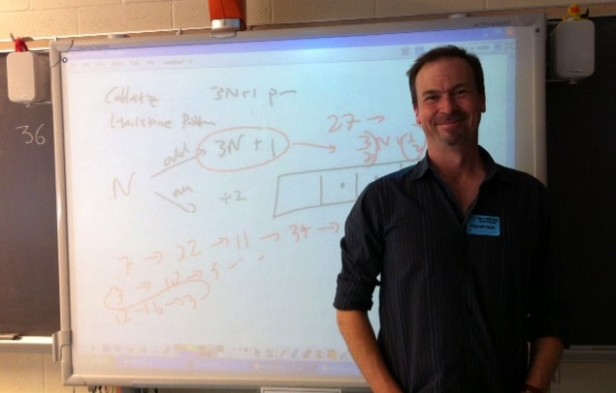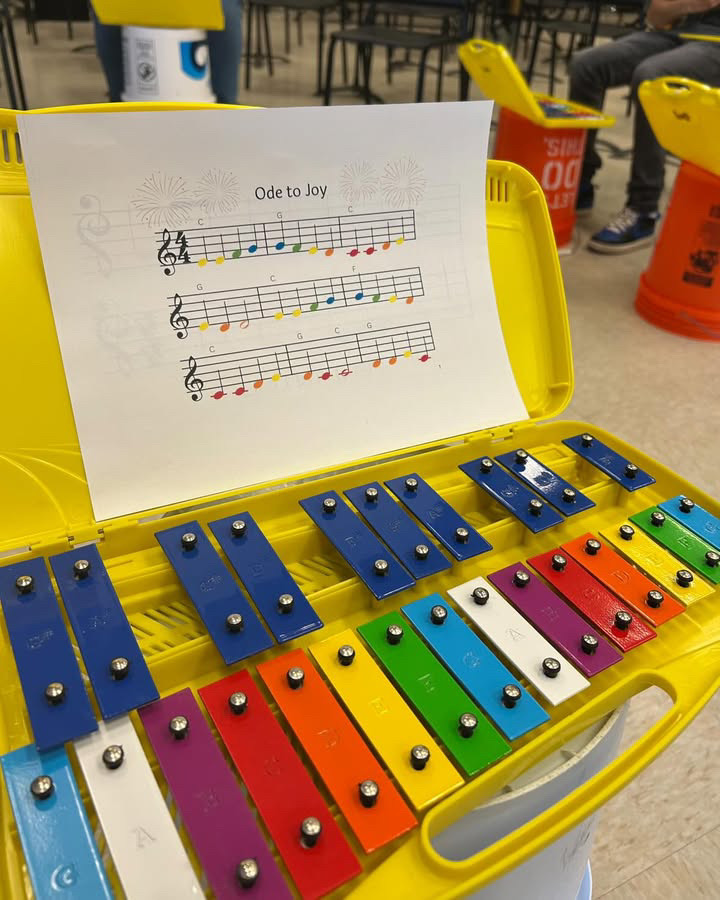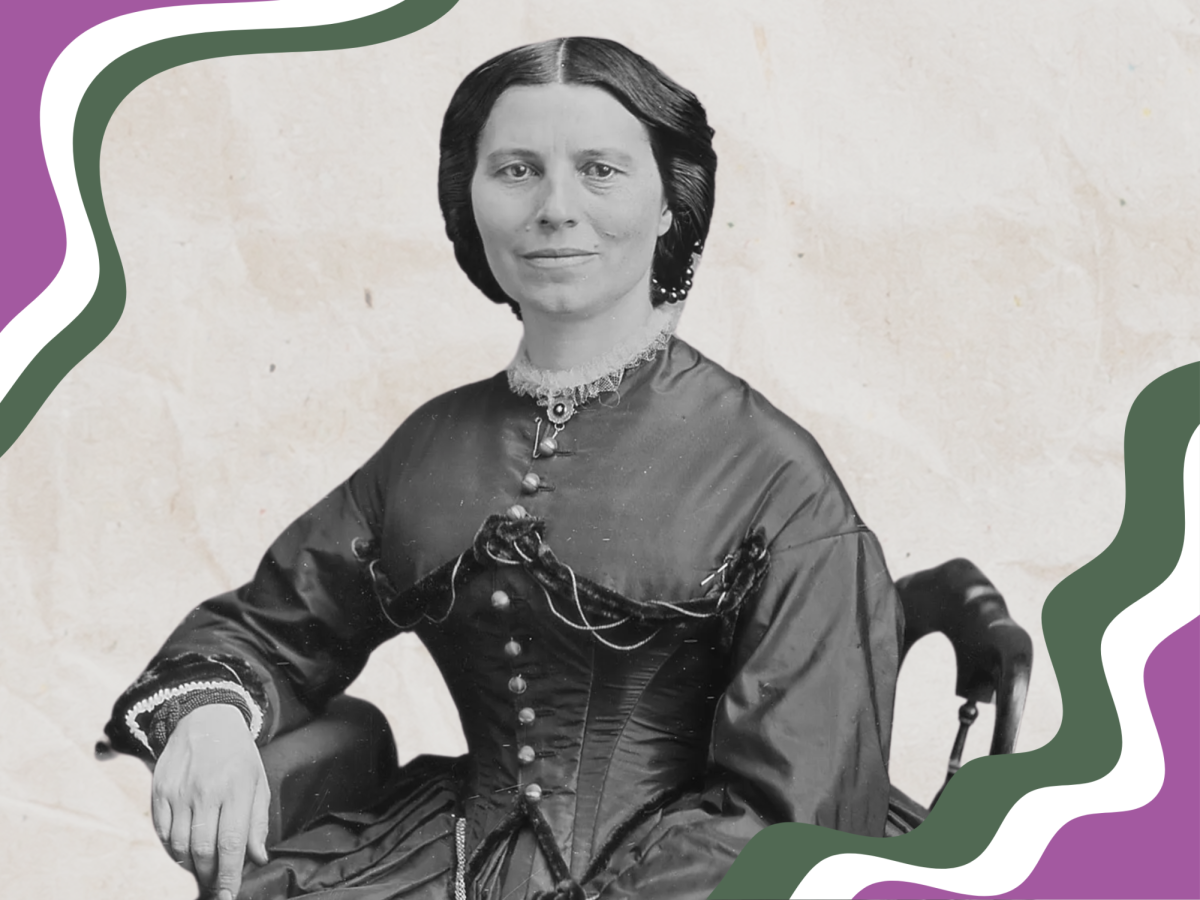For multiplication problems, we often turn to calculators for the answer. But what if someone said you could simply use dots and boxes to solve every one of those questions?

Mathematician James Tanton visited Susan Wildstrom’s multivariable calculus classes today to discuss creative ways of thinking and problem solving, including an innovative method he calls “Exploding Dots.” His idea can solve math from elementary arithmetic to polynomial divisions to Taylor series in calculus. Using rudimentary boxes and dots, he solved problems like (x4+4x3+6x2+4x+1) ÷ (x2+2x+1) and “Is 2100-1 prime?”
Tanton said he came up with his Exploding Dots method through a simple epiphany.
“The basic question is, ‘Why do things work the way they do?” he said. “It seemed the natural thing to do, and it seemed so rich and deep that I knew it was the right thing to do,” Tanton said.
Wildstrom met Tanton about 10 years ago at a mathematics convention. Since he moved to D.C. two weeks ago from Boston, where he taught math at the St. Mark’s School, Wildstrom invited him to speak to her classes.
“I always feel good about bringing a speaker in, but I was very excited when I heard he was going to come,” Wildstrom said. “He is one of the most creative mathematical thinkers that I know, and he doesn’t work with bounds. He’s very articulate and can suck you into whatever he’s thinking about.”
Tanton’s own experience with math in school inspired him to become a mathematician. When he asked his fifth grade teacher why multiplying two negative numbers resulted in a positive number, the teacher responded, “It just is. Go back to your worksheet.” In ninth grade, his teacher had each student draw a right triangle and measure the side lengths to confirm the Pythagorean Theorem. When Tanton questioned whether the equation worked coincidentially for the 37 triangles on the board, the teacher instructed him to try three more triangles.
“There were a number of incidents that just made me angry and made me want to become a proper math teacher,” Tanton said. “From some teachers, I learned that I’m not to ask questions in math and that I was never going to be told why stuff works and had to figure it out myself. So I did.”
During his school years, Tanton read many math-related books outside of school and learned to figure concepts out on his own. His journey to discover the true meaning behind math led him to move in 1988 from Australia to the U.S., where he earned his Ph.D. in mathematics from Princeton University. Now, he wants to help all students understand the method behind math.
The most important thing students can have is confidence, he said.
“What’s essential is the willingness to knock your way through a problem — flail and get it wrong and keep trying and eventually get through it,” he said. “Because that’s what life is really like. No one is going to give you the answer in the back of the book. I want to teach kids how to think.”
Senior Basil Smitham said he found Tanton’s presentation engaging and informative.
“The Exploding Dots idea created an interesting way to look at addition, subtraction, multiplication and division that I hadn’t thought about,” Smitham said. “You usually wouldn’t think about them because they seem so basic. It’s important for teachers to encourage students to think outside of formulas and techniques and instead really understand the material on a deeper level.”
Wildstrom said she believes Tanton’s teaching style can inspire students at any math level to do well.
“My husband thinks that the solution to the math teacher shortage is to clone Jim Tanton,” Wildstrom said. “If we could clone him and put one in every school, there’d be no shortage, and the kids would all love math.”










David Newman • Mar 23, 2012 at 7:27 am
James – You rock man! Loved your presentation!